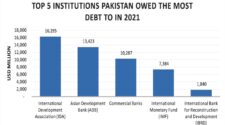Gul Ayesha Bhatti
PhD scholar of International Relations
guleayeshabhatti@gmail.com
 In Pakistan, the floods have devastated Sindh, Baluchistan, and Southern Punjab. Infrastructure has been severely damaged as a result of the floods. More than 5 million people have simply lost their houses and the floods have been the worst, causing of a serious humanitarian calamity. The roads and bridges entirely destroyed that had been providing access to numerous distant settlements. The work on Swat highway has delays as the result of flooding. Due to flooding, many hotels tourist and visiting points in Swat are impacted and ruined.
In Pakistan, the floods have devastated Sindh, Baluchistan, and Southern Punjab. Infrastructure has been severely damaged as a result of the floods. More than 5 million people have simply lost their houses and the floods have been the worst, causing of a serious humanitarian calamity. The roads and bridges entirely destroyed that had been providing access to numerous distant settlements. The work on Swat highway has delays as the result of flooding. Due to flooding, many hotels tourist and visiting points in Swat are impacted and ruined.
Due to the destruction of highways in Sindh, Baluchistan, and southern Punjab, it is incredibly challenging to relief supply the affected areas. Floods, which have also severely damaged our infrastructure, are also responsible of the destruction of offices, businesses, and warehouses in addition to the loss of homes, roads, and bridges. The entire economic loss and cost of reconstruction have been estimated at about US$ 13 billion, with more increases likely as the full extent of the damage becomes clear as the water level recedes.
Public has seriously helpless of health conditions; however, access to essential medical facilities are not available to those who live in flood-affected areas. Water-borne illnesses like diarrhea, cholera, malaria, typhoid fever, hepatitis A and E, air-borne illnesses like asthma (due to air humidity), fungal infections (due to moisture), and vector-borne illnesses like yellow fever, West Nile fever (WNF), dengue fever, etc. have spread by floods. Floods may indirectly contribute to a rise in water-borne illnesses that afflict the local populace. Malnutrition is the second most prevalent illness that is mostly disseminated under these circumstances (stunted growth). Poor nutrition, recurrent infections, and a lack of psychosocial stimulation all impede children’s growth and development. These diseases have lead towards the decline of the health of the victims and can even be the cause of death.
Flood has inflicted far more damage than just diseases and infrastructural damage. It has awakened the evil in form of crimes and insurgencies. An empirical rise is being observed in crimes related to thefts, burglaries and child kidnapping. Financially deprived victims are compelled to avert vicious actions which are adding to the overall crime rate in Pakistan. Moreover, insurgencies are also rising following people’s despair and sense of being left alone by the government. Mental frustration and financial stress have evoked a rebellious mindset in victims, who are turning to the streets bearing arms.
In an effort to defuse the situation and stop potential riots, it has also been claimed that flood victims are organizing protest rallies and damaging police vehicles. However, the flood itself, which is said to have claimed roughly 1500 lives, remains the most serious culprit. During the visit of the Prime Minister and Foreign Minister, the Sukkur police claimed to have filed a first information report (FIR) on terrorism charges against over 100 unidentified individuals for allegedly attacking police officers, throwing stones at vehicles, causing damage to both public and private property, and inciting flood victims outside a relief camp.
Although the government is making every effort to resolve this crisis and provide aid to those affected by the flood but failed due political instability. Even our Pakistani Army and Pakistani Air Force have helped diligently to support flood victims and provided them the comedies of life. For instance, the Pakistan Army and Pakistan Air Force have established rehabilitation facilities at their respective bases so that the local medical staff may help the flood victims in every manner possible, including providing them with shelter, clothing, food, rations, medication, money, and other necessities. The government has dispatched at least 6,500 soldiers to help civilian authorities in relief and rescue efforts around the state.
The Prime Minister also has visited the flood-affected areas to encourage the victims and give them hope and confidence. The Government also launched the Flood Relief Fund to help and support the victims in these poor circumstances. The Flood Response Plan (FRP) was jointly launched by the Government of Pakistan and the United Nations which focuses on the needs of 502 million people, with US$ 160.3 million in life-saving response activities covering food security, agricultural and livestock assistance, shelter and non-food items, nutrition programs, primary health services, protection, water and sanitation, women’s health and education support.
The Public and NGOs are also playing a pivotal role to overcome the demolition by floods. The public is helping the flood victims enthusiastically likewise the Government. The public reached out to the different flood-affected areas and facilitated the victims by providing them with shelter, ration, and clothes. They have also created flood relief funds on social media to provide aid to the victims. They have used social media in a very beneficial way which helped the victims globally. Many telethons were conducted by social activists and public figures. Edhi, Ehsaas, and Chhipa welfare associations also cooperated in providing relief to flood victims.
Likewise, some of prominent international figures and celebrities visited Pakistan for emotional and financial support to the victims. In addition, Angelina Jolie, the Oscar winner, met the flood victims in southern Pakistan; she emphasized the importance of providing immediate assistance to victims as well as long-term solutions to the growing issues caused by climate change. Likewise, Islamic scholar Mufti Ismael Menk visited flood-hit areas in Pakistan to highlight the plight of flood victims and raise funds to support them. International organizations like UNICEF and UN Women are responding with the Government and partners, helping to deliver safe drinking water; lifesaving medical supplies; useful food supplies; and hygiene kits to children and families. They are also establishing temporary learning centers and supporting the protection and psychosocial well-being of women and children affected by these devastating floods.
Although, Pakistan has received financial aid from the US, UN, UK, UAE, Turkey, World Bank, etc. For instance, The World Bank agreed in a meeting with Prime Minister Shahbaz Sharif on the sidelines of the U.N. General Assembly to provide $850 million in flood relief for Pakistan. Similarly, UN secretary general António Guterres visited Pakistan to assist the victims and to have a look at the situation. However, this financial provision should not be considered as aid, but rather reimbursements by other countries since this flood is their creation first-hand because of the global emissions and climate change. In wake of this time of crises in Pakistan, World being a global village should lend its hands in overcoming the repercussions of the flood. Developed and Industrialized states should accept this disaster as a result of their ill practice of polluting the environment, which is ironically forcing developing countries to pay the price. By giving relief to Pakistan in matters of taxes and loans, a lot of damage can be covered.
The government must take a significant role in handling this challenge. It must take adequate steps to recover these damages as soon as possible to give relief to the flood victims. In this regard, government should work on concrete action plan so that in the coming years this situation may be managed appreciably and dealt with accordingly. The Government should construct dams in potential target areas. The storing of this water may benefit to produce electricity which could satisfy the energy needs of the country. Nature-based solutions like green infrastructure (plantation) may regulate the flow of water and prevent from the future flood damages.
Effective Strategy to overcome Flood Crisis in Pakistan











